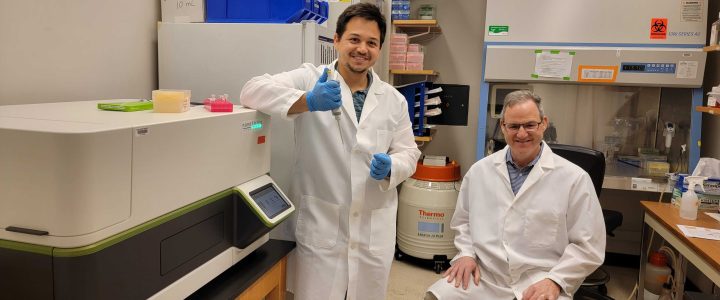Could microRNAs be a new path to treatment of Fragile X syndrome? MicroRNAs are disrupted in Fragile X, and so this team will work to understand what is going wrong and explore ways to correct it with drugs which directly target microRNAs.
Read moreEmory University
Three-Dimensional Model for Identifying Fragile X Treatments

With a $90,000 grant from FRAXA Research Foundation awarded in 2018, Dr. Peng Jin and Dr. Juhnee Kang at Emory University will develop and analyze Fragile X brain organoids to understand the disorder and identify treatment targets.
Read moreFunctional Interplay Between FMRP and CDK5 Signaling
With a $180,000 grant from the FRAXA Research Foundation over 2011-2014, Dr. Yue Feng and Dr. Wenqi Li at Emory University will study CDK5 pathway function and regulation in an effort to break down whether and how CDK5 signaling is affected by the loss of the Fragile X protein, FMRP, in the Fragile X mouse model.
Read moreGenetic and Pharmacologic Manipulation of PI3K Activity in FXS: Assessing Potential Therapeutic Value

With a $90,000 grant from the FRAXA Research Foundation, Dr. Gary Bassell and his team at Emory University explored the PI3K/mTOR signaling complex in FXS via genetic and pharmacologic rescue approaches, to reduce the enzymatic function of specific components of this complex pathway in an FXS mouse model.
Read moreSmall Molecule Screen Using Fragile X Neural Stem Cells

With a $90,000 grant from FRAXA Research Foundation, Dr. Peng Jin’s team from Emory University School of Medicine found that Fragile X causes an increase production of new cells, so they tested large numbers of drugs to find those that can correct this. This high throughput drug screen uses neural stem cells from Fragile X knockout mice to identify small molecules which may be therapeutic in Fragile X.
Read moreBasic Mechanisms of Disease and Potential Therapeutic Strategies

With $245,000 in grants from FRAXA Research Foundation, Dr. Stephen Warren and his lab at Emory University studied all aspects of Fragile X syndrome, from the mechanisms of repeat expansion to high-throughput drug screens in the Drosophila model of Fragile X. The Warren lab made the original discovery of the Fragile X gene, FMR1, in collaboration with the Nelson and Oostra labs, and is recognized internationally as a leader in molecular genetics. Recent projects include establishment of induced pluripotent stem cell lines from Fragile X patients, and determination of other forms of mutation in the Fragile X gene, other than the most common trinucleotide repeat expansion.
Read moreA Genetic Screen For Dominant Modifiers of Drosophila (Fruitfly) FMR

With a $35,000 grant from FRAXA Research Foundation in 2002, Dr. Kevin Moses and his team at Emory University studied fruit fly eye phenotypes to screen for genes that function in the Fragile X pathway.
Read more
